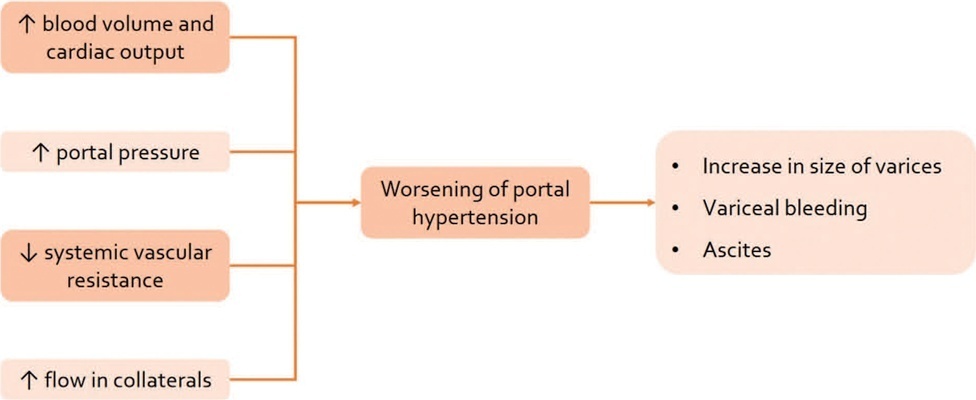Summary
Revista Brasileira de Ginecologia e Obstetrícia. 2022;44(10):972-985
Different drugs are used to treat mastalgia, such as danazol and bromocriptine, and both are associated with side effects, due to which most of women and healthcare providers are interested in herbal medicines. Therefore we aim to study the effectiveness of phytoestrogens on the severity of cyclic mastalgia.
To carry out the present study, English electronic resources such as the Cochrane Library, ISI Web of Science, Scopus, and PubMed were used systematically and with no time limitation up to February 10, 2020.
In total, 20 studies were included in the present meta-analysis. The results of the meta-analysis showed that herbal medicines versus the control group (standard mean difference [SMD] = - 0.585; 95% confidence interval [CI]: - 0.728–- 0.44; heterogeneity; p = 0.02; I2 = 42%), herbal medicines versus the B group (SMD = - 0.59; 95%CI: - 0.75–- 0.44; heterogeneity; p = 0.03; I2 = 42%), and its subgroups, such as phytoestrogen (SMD = - 0.691; 95%CI: - 0.82–- 0.55; heterogeneity; p = 0.669; I2 = 0%), Vitex-agnus-castus (SMD = - 0.642; 95%CI: - 0.84–- 0.44; p < 0.001; p = 203; I2 = 32%), flaxseed (SMD = - 0.63; 95%CI: - 0.901–- 0.367; p = 0.871; I2 = 0%), and evening primrose (SMD= - 0.485; 95%CI:- 0.84–- 0.12; p = 0.008; heterogeneity; p = 0.06; I2 = 56%] may have effective and helpful effects on improving cyclic breast mastalgia. Also, chamomile, isoflavone, cinnamon, and nigella sativa significantly reduced mastalgia symptoms.
Herbal medicines and their subgroups may have effective and helpful effects on improving cyclic breast mastalgia. The findings of our meta-analysis must be done cautiously because low methodological quality in some evaluated studies of this systematic review.
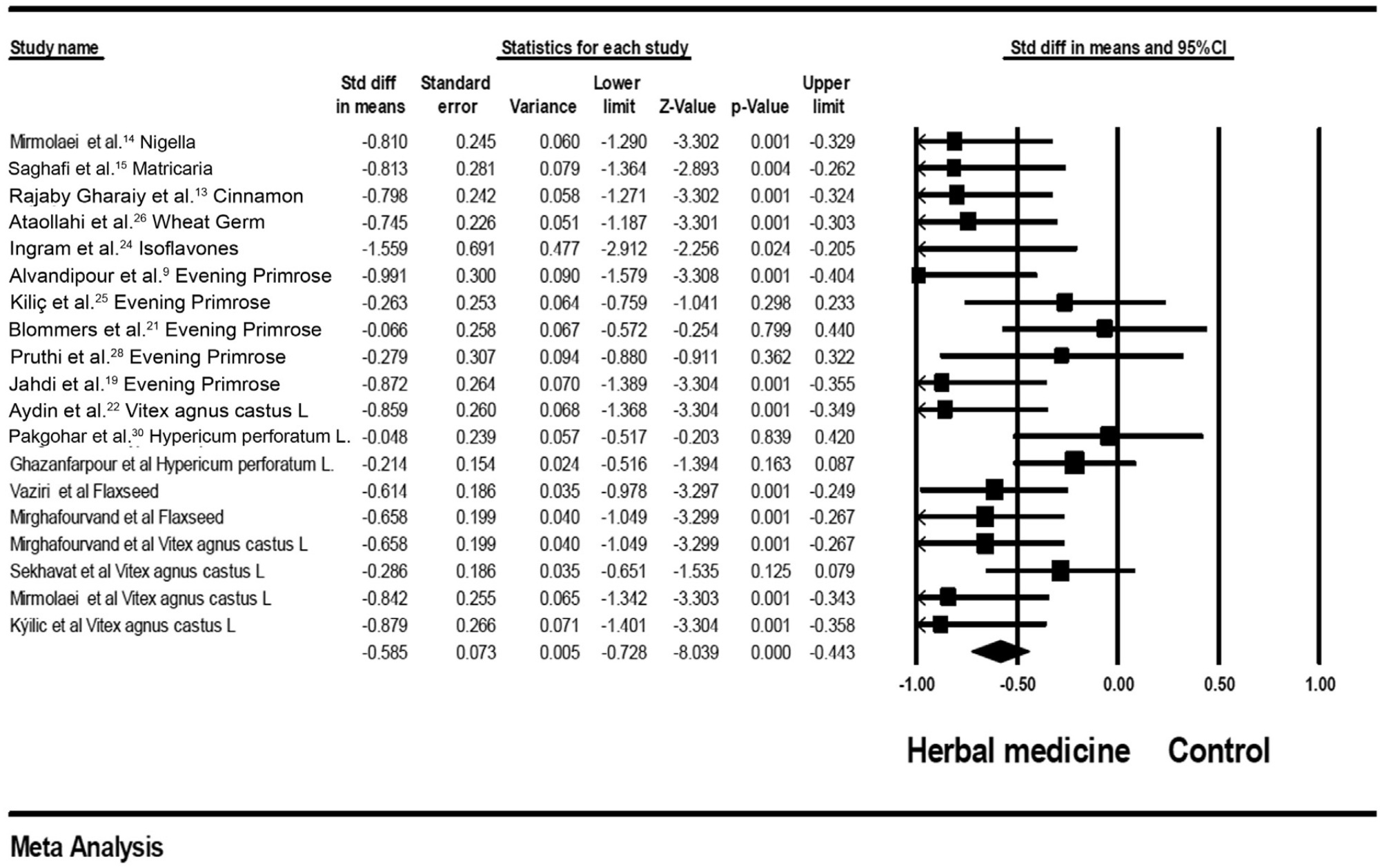
Summary
Revista Brasileira de Ginecologia e Obstetrícia. 2022;44(10):953-961
Studies have consistently shown a significant increase in the risk of congenital heart defects in the offspring of diabetic mothers compared with those of nondiabetic pregnancies. Evidence points that all types of pregestational diabetes have the capacity of generating cardiac malformations in a more accentuated manner than in gestational diabetes, and there seems to be an increased risk for all congenital heart defects phenotypes in the presence of maternal diabetes. Currently, the application of some therapies is under study in an attempt to reduce the risks inherent to diabetic pregnancies; however, it has not yet been possible to fully prove their effectiveness. The present review aims to better understand the mechanisms that govern the association between pregestational diabetes and congenital heart defects and how maternal diabetes interferes with fetal cardiac development, as there is still a long way to go in the investigation of this complex process.

Summary
Revista Brasileira de Ginecologia e Obstetrícia. 2022;44(8):790-796
This systematic review aims at describing the prevalence of urinary and sexual symptoms among women who underwent a hysterectomy for cervical cancer.
A systematic search in six electronic databases was performed, in September 2019, by two researchers. The text search was limited to the investigation of prevalence or occurrence of lower urinary tract symptoms (LUTS) and sexual dysfunctions in women who underwent a hysterectomy for cervical cancer. For search strategies, specific combinations of terms were used.
A total of 8 studies, published between 2010 and 2018, were included in the sample. The average age of the participants ranged from 40 to 56 years, and the dysfunctions predominantly investigated in the articles were urinary symptoms (n= 8). The rates of urinary incontinence due to radical abdominal hysterectomy ranged from 7 to 31%. The same dysfunction related to laparoscopic radical hysterectomy varied from 25 to 35% and to laparoscopic nerve sparing radical hysterectomy varied from 25 to 47%. Nocturia ranged from 13%, before treatment, to 30%, after radical hysterectomy. The prevalence rates of dyspareunia related to laparoscopic radical hysterectomy and laparoscopic nerve sparing radical hysterectomy ranged from 5 to 16% and 7 to 19% respectively. The difficulty in having orgasm was related to laparoscopic radical hysterectomy (10 to 14%) and laparoscopic nerve sparing radical hysterectomy (9 to 19%).
Urinary and sexual dysfunctions after radical hysterectomy to treat cervical cancer are frequent events. The main reported disorders were urinary incontinence and dyspareunia.
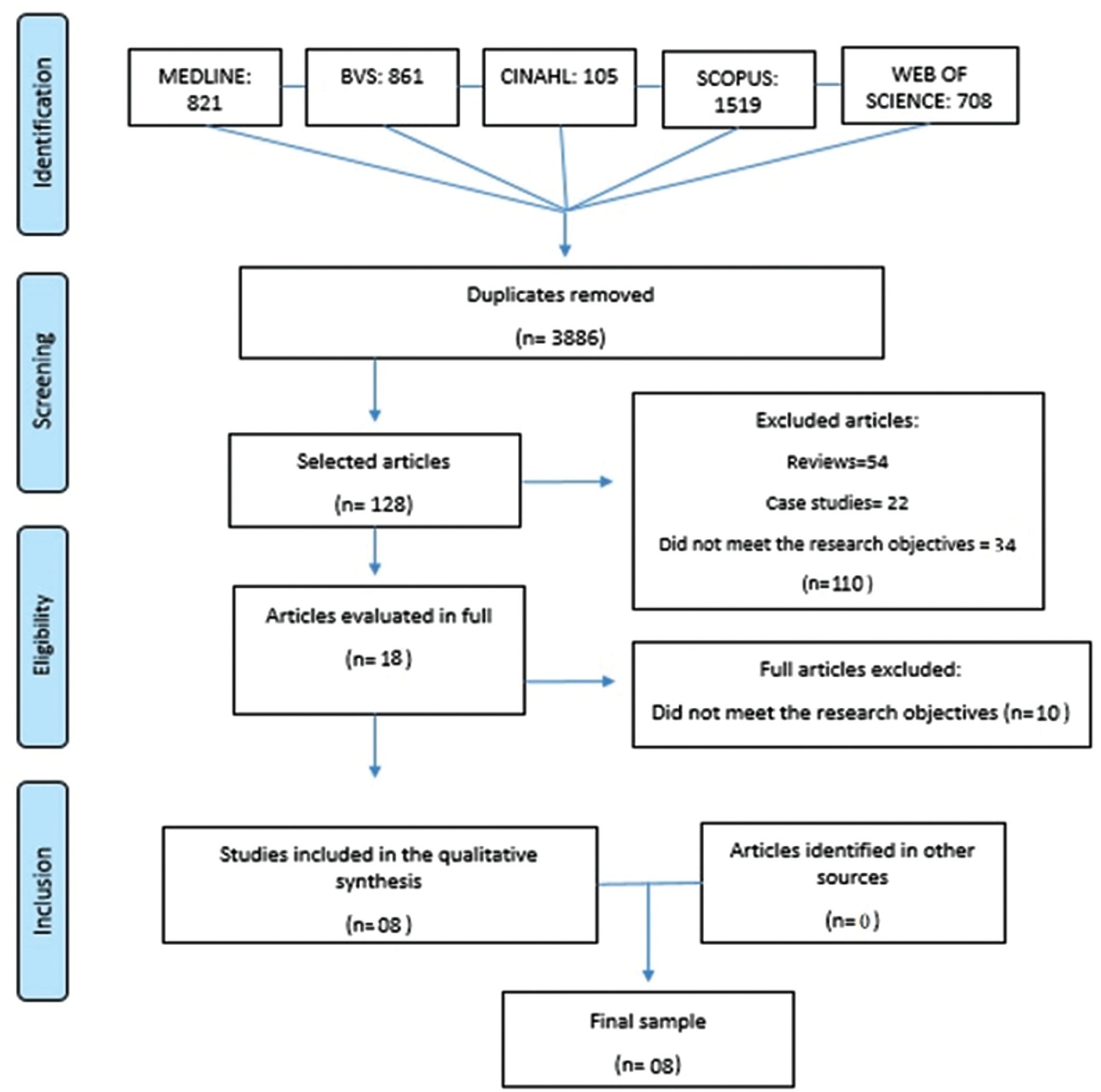
Summary
Revista Brasileira de Ginecologia e Obstetrícia. 2022;44(10):962-971
To explore the main sexuality complaints of gynecologic cancer survivors after treatment and to identify the care strategies provided.
Searches were conducted in six electronic databases: Scopus, Web of Science, LILACS, MEDLINE, PsychINFO, and EMBASE.
Articles published between 2010 and 2020 were selected and the following descriptors were used in the English language: female genital neoplasms and gynaecological cancer. The methodological quality of the studies used the Mixed Methods Appraisal Tool (MMAT).
The primary data extracted were: names of the authors, year of publication, country of origin, objective and type of study, data collection instrument, sample size and age range, types of cancer, and symptoms affected with the strategies adopted.
A total of 34 out of 2,536 screened articles were included. The main strategies found for patient care were patient-clinician communication, practices for sexuality care, individualized care plan, multiprofessional team support, and development of rehabilitation programs. For sexuality care, the most common practices are pelvic physiotherapy sessions and the use of vaginal gels and moisturizers.
The main complaints identified in the scientific literature were low libido and lack of interest in sexual activity, vaginal dryness, pain during sexual intercourse, and stenosis. Different care strategies may be adopted, such as follow-up with a multidisciplinary health team and sexual health rehabilitation programs, which could minimize these symptoms and ensure the quality of life of patients.
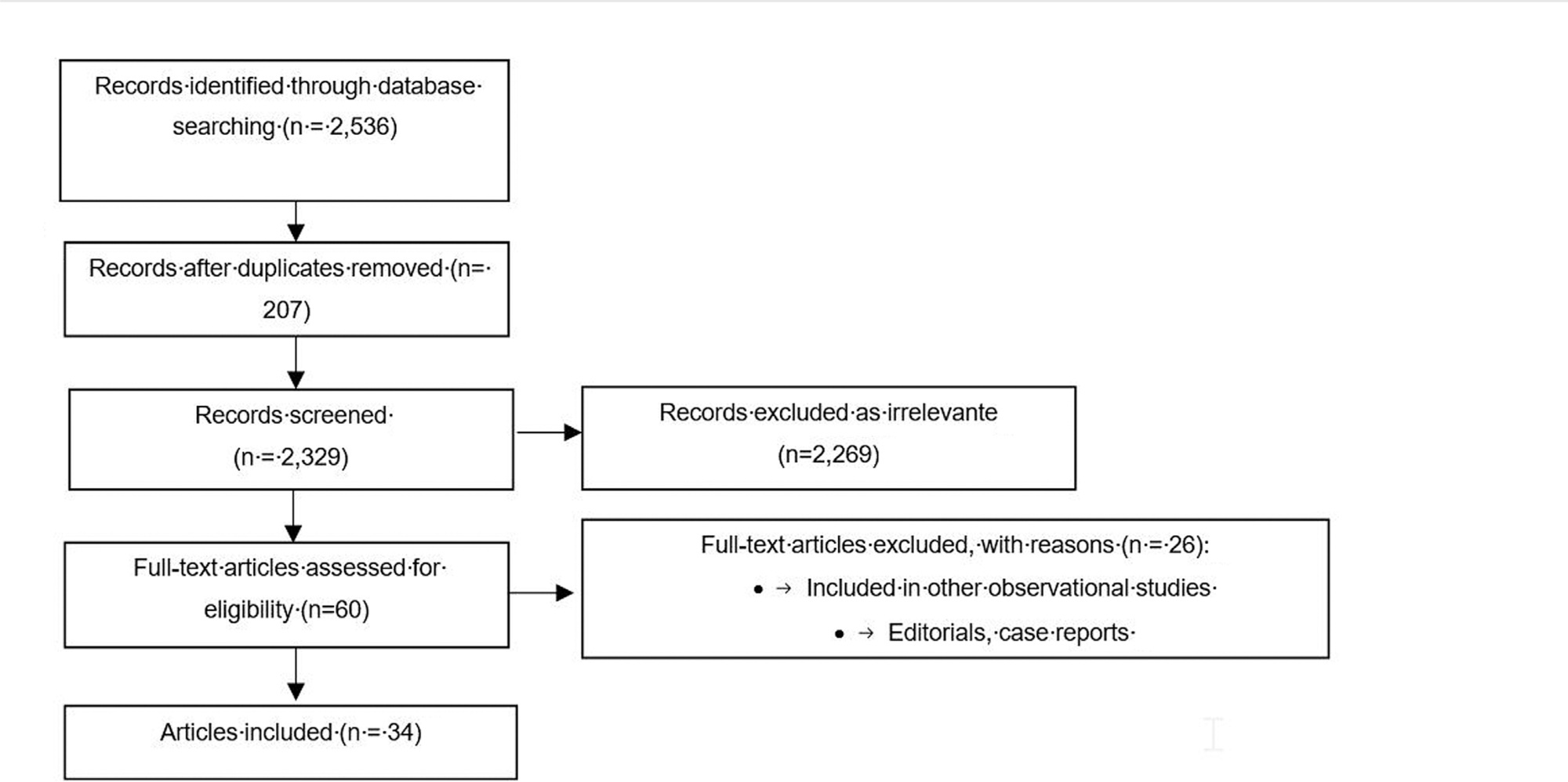
Summary
Revista Brasileira de Ginecologia e Obstetrícia. 2022;44(9):891-898
To evaluate the effect of neuromodulatory drugs on the intensity of chronic pelvic pain (CPP) in women.
Searches were carried out in the PubMed, Cochrane Central, Embase, Lilacs, OpenGrey, and Clinical Trials databases.
The searches were carried out by two of the authors, not delimiting publication date or original language. The following descriptors were used: chronic pelvic pain in women OR endometriosis, associated with MESH/ENTREE/DeCS: gabapentinoids, gabapentin, amitriptyline, antidepressant, pregabalin, anticonvulsant, sertraline, duloxetine, nortriptyline, citalopram, imipramine, venlafaxine, neuromodulation drugs, acyclic pelvic pain, serotonin, noradrenaline reuptake inhibitors, and tricyclic antidepressants, with the Boolean operator OR. Case reports and systematic reviews were excluded.
The following data were extracted: author, year of publication, setting, type of study, sample size, intervention details, follow-up time, and results.
A total of 218 articles were found, with 79 being excluded because they were repeated, leaving 139 articles for analysis: 90 were excluded in the analysis of the titles, 37 after reading the abstract, and 4 after reading the articles in full, and 1 could not be found, therefore, leaving 7 articles that were included in the review.
Most of the studies analyzed have shown pain improvement with the help of neuromodulators for chronic pain. However, no improvement was found in the study with the highest statistical power. There is still not enough evidence that neuromodulatory drugs reduce the intensity of pain in women with CPP.

Summary
Revista Brasileira de Ginecologia e Obstetrícia. 2022;44(6):621-628
Breaking bad news is common in obstetrics and gynecology (ob-gyn). However, it is difficult, and few doctors receive training on how to deal with this situation. This narrative review aims to gather, analyze, and synthesize part of the knowledge on the area, focused on Ob-Gyn. Among the 16 selected articles, two are randomized controlled intervention studies, and most studies refer to obstetrics. The results found by us pointed out that simulation, feedback/debriefing, lectures, and protocols could improve doctors’ performance in communicating bad news. For patients, the context and how the information is transmitted seem to impact more than the content of the news. Ob-Gyn doctors could benefit from specific protocols and education, given the specialty’s particularities. There is a lack of evidence about the most effective way to conduct such training. Finding validated ways to quantify and classify studies’ results in the area, which would allow for the objective analysis of outcomes, is one of the biggest challenges concerning this topic.

Summary
Revista Brasileira de Ginecologia e Obstetrícia. 2022;44(6):614-620
The impact of Chlamydia trachomatis (CT) infection on female’s fertility is not completely established yet, since the level of evidence associating these factors is still weak. Hence, the goal of the present review is to contribute to a better elucidation of this matter. The electronic database chosen was the Medline/PubMed, with the last survey on May 11, 2021. Publication date was used as a filter, with the previous 5 years having been selected. The following describers were used: chlamydia trachomatis AND infertility; chlamydia trachomatis AND tubal alteration AND infertility; chlamydia AND low pregnancy rates. From the 322 studies screened, 293 that failed to meet our eligibility criteria were excluded. Subsequently, we removed seven studies for not having the possible correlation between CT infections and female infertility as its main focus, and three for being about sexually transmitted infections (STIs) in general. Moreover, two studies designed as reviews were also excluded. Ergo, we included 17 studies in our qualitative analysis. The authors conducted research individually and analyzed carefully the studies selected. As we retrieved the information needed for our study through reading the texts, no contact was made with the authors of the studies selected. This systematic review corroborates the hypothesis that CT infection potentiates female infertility, as 76.47% of the included studies found a positive correlation between them. We conclude that there is an important association between CT infection and female infertility. Ergo, making CT screening part of the infertility investigation routine is relevant and has a reasonable justification.
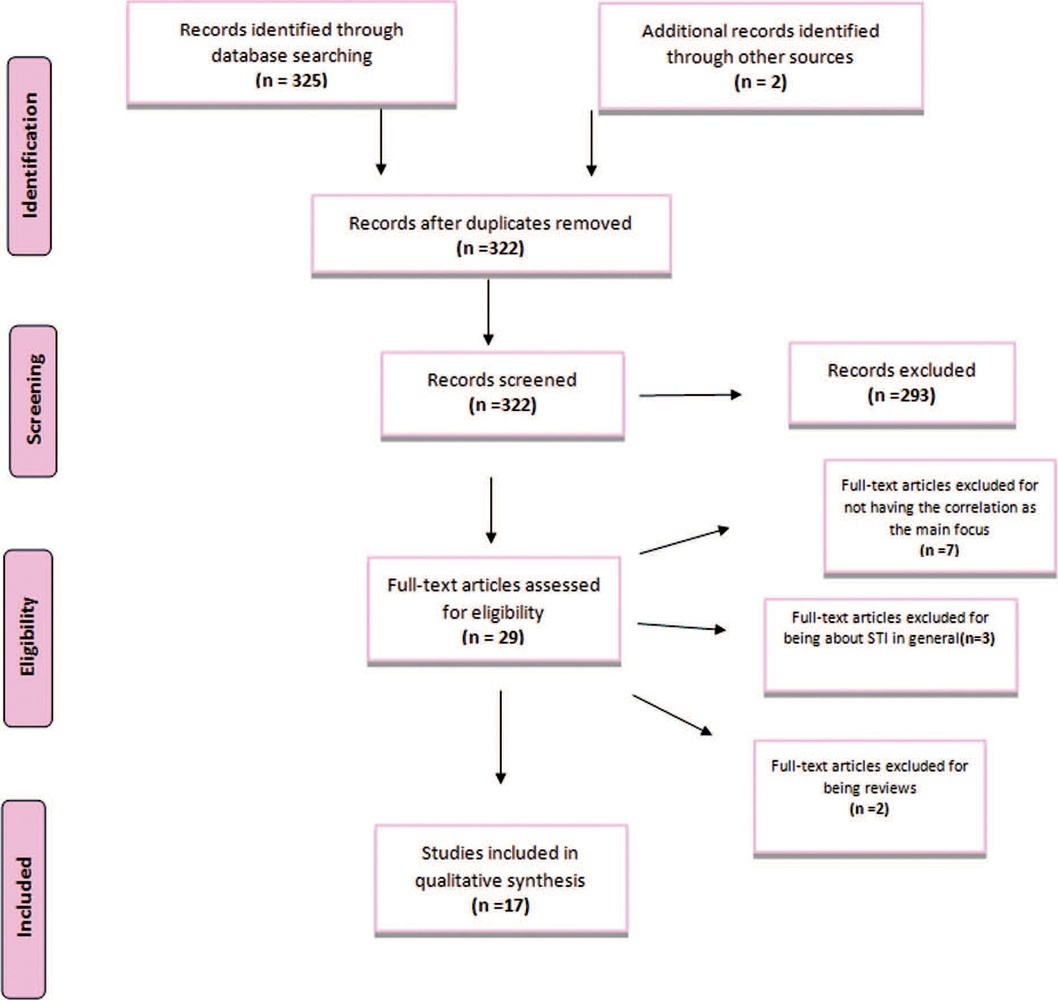
Summary
Revista Brasileira de Ginecologia e Obstetrícia. 2022;44(6):609-613
Pregnancy in non-cirrhotic portal hypertension (NCPH) is an uncommon condition. Its management is challenging both to the obstetricians as well as to the gastroenterologists due to the lack of more extensive studies and standard clinical practice guidelines. These patients are at increased risk of portal hypertension (PTH) complications, especially variceal bleeding, and with an increased incidence of adverse maternal and fetal outcomes. Hence, a multidisciplinary approach is required for management of pregnancy in NCPH. This short review describes the different aspects of pregnancy with NCPH, emphasizing specific strategies for preventing and managing PTH from the preconceptional period to postpartum.
